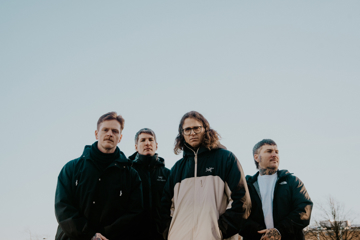Six Moments The Beach Boys Documentary Missed
The Beach Boys Disney documentary ran out at 1975.... but there was so much more of the story left to tell.

The Beach Boys (Credit: Capitol Records, Public domain, via Wikimedia Commons)

The Beach Boys are the talk of the town again with the release of the Disney+ documentary chronicling their long career…. But why did it stop at 1975?
The Beach Boys’ story is one of the most interesting rock yarns in history, creating some of the very best (and very worst) music in human history. From songs like God Only Knows that made Paul McCartney weep to songs like Student Demonstration Time that made me weep, the band’s history is its legacy—a time capsule of creativity, tension, family, and life that is fascinating, heartbreaking, and heartwarming all at once.
For fans who know the stories well, the nearly two-hour doco is great, but it has you looking at your watch around an hour and a half in, knowing there’s so much still to go. Then, it ends as if nothing happened after 1975. The Beach Boys story really is an epic tale in three acts, but Disney has forgotten about act three, which includes some of the best drama, humanity, tragedy, and redemption in the whole story.
Sure, a three-hour documentary might have been pushing it, but so much of the Beach Boys’ rich legacy was left on the cutting room floor, so here are the six Beach Boys moments their story is simply incomplete without.
1. The Beach Boys Love You
Don't miss a beat with our FREE daily newsletter
The film covered the band’s 70s resurgence with the Endless Summer compilation giving a new generation an entry point into their classic hits and touched on their 15 Big Ones record from 1975. Marketed as Brian’s Back, the doco leaves you hanging as if that’s the end. Musically, the REAL Brian’s Back story was 1977’s Love You. Recorded ostensibly as Brian’s first solo album but marketed as a Beach Boys release because of the tension a solo album would cause at the time, the record sank without a trace but has become one of Beach Boys fans’ favourite albums. It was Brian’s final proper effort to engage with the band, so closes a chapter on the band’s history (until 2012’s surprisingly decent reunion album That’s Why God Made The Radio).
2. Dennis Wilson’s Pacific Ocean Blue & Untimely Death
Dennis Wilson’s musical genius is touched on in the film, but more air time is given to his interactions with Charles Manson than his musical output. Pacific Ocean Blue is one of the best albums released by any Beach Boy, either as a band or as a solo project. By the late 70s, Dennis was falling into drugs and drinking, abusing heroin, cocaine and alcohol. It took a toll on his voice, becoming gruff and even strained, but that just enhanced this beautiful album. It’s vulnerable, brittle and, frankly, a masterpiece. It has become a historical classic despite not selling so well at the time. Wilson tried to create a follow-up (which was released in the last decade as the unfinished Bambu), but his substance issues hampered its completion.
In early 1983, the band ejected Wilson from the touring lineup to sort out his addiction issues. Instead, he spiralled, becoming even more addicted, homeless and eventually drowned during an alcohol-fuelled boat trip.
3. Eugene Landy’s Hold Over Brian
Eugene Landy was Brian’s psychologist from the 1970s onwards and, over decades, became his carer. He eventually took advantage of him, stole from him, and steered his career as a manager and even a producer. Brian’s first solo album in 1988 had Landy unfairly credited as a songwriter and producer, which was later overturned.
While his therapy enabled Brian to re-emerge into the world after his mental issues in the 80s, Landy’s behaviour towards him was nothing short of abuse, with Brian eventually being rescued from his “care” after meeting his wife, Melinda.
Landy was also part of the shelved Sweet Insanity album, which was going to be Brian’s first rap album. The record has since leaked, and we’re glad it never saw the light of day.
4. Kokomo
It’s hard to believe the documentary couldn’t extend itself to cover what was, like it or not, The Beach Boys’ biggest-ever single. Kokomo was recorded for the soundtrack of Tom Cruise movie Cocktail in 1988, along with the song Still Cruisin. Featuring TV star John Stamos on drums and produced by Terry Melcher and Mike Love, Brian was not involved by this time, and the band was ostensibly a Mike Love solo project. Hated by “true” Beach Boys fans, there were few sharks left to jump by this stage of the band’s career, but if there were, this one jumped it.
But for new fans and the general public at large, it proved why they continue to endure—the band delivers a sense of fun and good times. It propelled the Beach Boys to another generational resurgence and proved that the Beach Boys story is indeed more than just Brian Wilson.
5. Carl Wilson’s Death
According to the documentary, Carl Wilson was the “glue” that held the band together. He was integral to the band’s output from the 1970s onwards and worked with Brian on his 90s solo records while remaining a member of Mike Love’s Beach Boys. Carl passed away in 1998 from lung cancer after having been a heavy smoker from the age of 12.
Wilson also had his own great solo output in the 1980s, which is worth visiting for any Beach Boys completist.
His death heralded the band's final creative chapter, and from that point on, it became a Mike Love touring act.
6. Smile Is Released
In the 2000s, Brian Wilson reunited with his Smile collaborator Van Dyke Parks, to finally tackle the elephant in the room—his unfinished Smile project. Created with the help of his touring keyboardist, Darian Sahanaja, the project was performed live for the first time in London. After its warm reception, it was recorded (or at least completed) for the first time, released in 2004.
With the monkey off his back, Brian toured the record globally, and Capitol returned to the original master tapes, releasing the original Smile Sessions in 2011. Now rightly applauded as one of the world’s great albums, the record completes the Beach Boys legacy.







